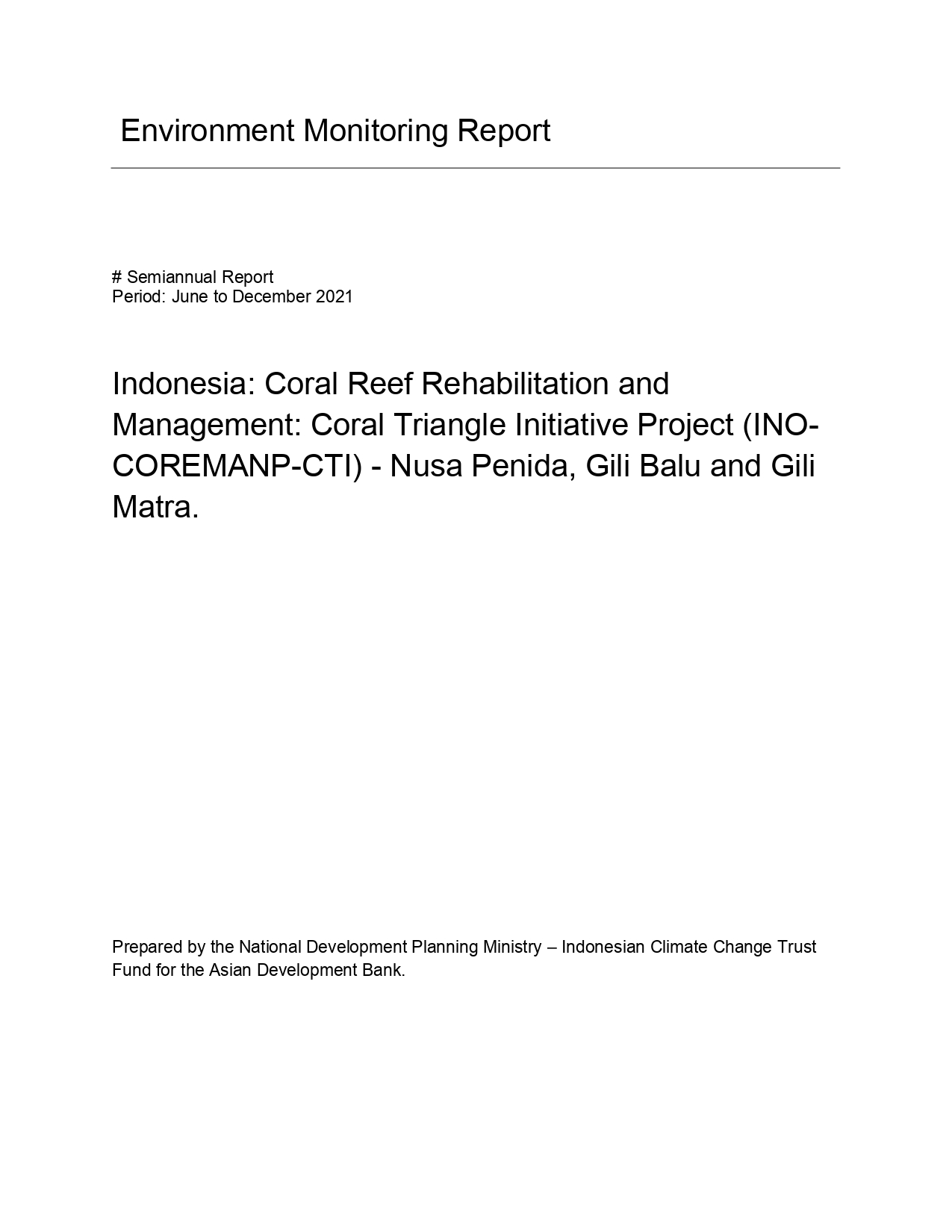
This Semi-Annual Environment Safeguards Monitoring Report for Coral Reef Rehabilitation and Management: Coral Triangle Initiative Project (INO-COREMAP-CTI) of Nusa Penida, Gili Balu and Gili Matra covers the period from June 2021 to December 2021. Refer to the Initial Environmental Examination (IEE) prepared for the proposed three project area concluded that, the project is categorized as “B” for Environment categorization as per its potential adverse environmental impact are less. The development process consists of (1) Mangrove tracking, bird watching, monitoring towers, and an information center located in Nusa Penida, Bali Province. (2) The monitoring tower, information center, and mooring buoy are located in Gili Balu, West Nusa Tenggara Province. (3) Monitoring Tower and Information Center located in Gili Matra, West Nusa Tenggara Province.
These areas were selected based on the identification of critical gaps with a geographic targeting to ensure coverage of target regions. It will create no significant adverse environment impact, some negative impact identified can be easily mitigated by adopting environmental management plan (EMP) and or Construction Environmental Management Plan (CEMP) that will be prepared. In this reporting period no progress has been made on the status of environmental permits, hence several environmental assessment requirements prior to construction such as the preparation of SPPL or UKL UPL documents will also be carried out to minimize environmental impacts.
All the project activities comply with the concerned laws and regulations of Indonesian Government. The screening of the project sites and the preparation of IEE- environment was based on the, ADBs Safeguard Policy Statement 2009. After implementation, the subproject will assist the community for improvement of the management effectiveness of Marine Protected Area (MPA) Nusa Penida, Gili Balu and Gili Matra. Further, the surveillance tower aims to support the operational of Surveillance Group, the mangrove tracking, bird watching and information center will support ecotourism activity. The project output indirectly contributes to gender equality and gender responsiveness.
Environmental survey and public consultation have been carried out during the design phase as well as implementation phase of the project. The proposed subproject is a small-scale construction, and most of the impacts are concentrated in the construction phase. The impact on air quality will be minimal because all the proposed alignments are accessible, moreover, the activities are not concentrated in one place (localized) but are widespread dispersed that provide adequate buffering for the air environment. Therefore, the impact on air quality from construction activities is considered insignificant. Furthermore, no liquid waste is generated due to project activities. However, a small amount of domestic effluent from staff residences and construction camps is generated which is discharged into local soaking pits (small irrigation canals will be provided to collect and drain construction project output). The main source of noise during the construction phase comes from equipment and transport vehicles. However, no significant variation in noise levels from construction-related activities is expected. The views raised at the consultation and survey were incorporated in the design. Issues raised are being addressed during the implementation phase to ensure that the environment in the project area are not affected adversely by implementation of the project.
